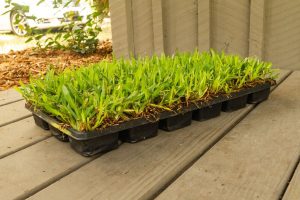

If you live in the subtropical/tropical area of the United States, you will likely want a St. Common Pests: Large patch, dollar spot, spring dead spot.Bermuda grows in the warm-season grass zone and the transition zone, meaning it can thrive in the lower 2/3rds of the United States. In fact, it needs to be mowed very short so that it doesn’t shade itself out and die. Augustine in most climates, which is why itīermuda is not shade-tolerant. Stolons grow across the ground filling inīare patches of soil, while rhizomes grow underneath the ground establishing Common Pests: Chinch bugs, brown patch, gray leaf spotīermuda is also a sod-forming turf, although it spreads withīoth stolons and rhizomes.Fertilizer: 2lbs-4lbs of nitrogen/growing season/1,000sq’.Irrigation: 1” only when lawn shows drought stress.Grows in the warm-season grass zone, which covers southern New Mexico andĪrizona, most of Texas, Louisianna, Mississippi, Alabama, southern Georgia and Augustine is the most shade-tolerant warm-season grass. That is able to choke out weeds and other grasses if it is maintained properly. This allows it to spread quicklyĪnd repair itself easily. This is a sod-forming turf, meaning it spreads throughĪbove-ground stolons that root into the soil. However, they are unique grasses that need very different maintenance schedules in order to form a healthy lawn. Augustine and Bermuda are warm-season turfgrasses that will grow vigorously and fill in quickly under the right circumstances. Augustine in spite of its aggressive counterpart. It depends on your climate, soil, and maintenance practices. Augustine will take over Bermuda, the answer is yes, no, and

Check out the DynaTrap Mosquito & Flying Insect Trap – Kills Mosquitoes, Flies, Wasps, Gnats, & Other Flying Insects – Protects up to 1/2 Acre (link to Amazon).


 0 kommentar(er)
0 kommentar(er)
